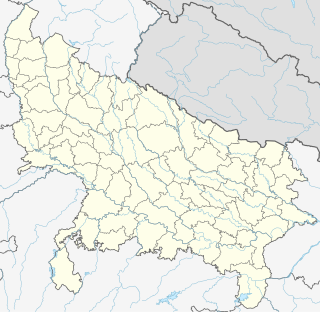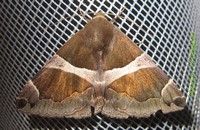| Pindara | |
|---|---|
 | |
| Pindara illibata | |
| Scientific classification | |
| Kingdom: | |
| Phylum: | |
| Class: | |
| Order: | |
| Family: | |
| Genus: | Pindara Moore, 1885 |
| Pindara | |
|---|---|
 | |
| Pindara illibata | |
| Scientific classification | |
| Kingdom: | |
| Phylum: | |
| Class: | |
| Order: | |
| Family: | |
| Genus: | Pindara Moore, 1885 |

Eagle is the common name for many large birds of prey of the family Accipitridae. Eagles belong to several groups of genera, some of which are closely related. Most of the 60 species of eagle are from Eurasia and Africa. Outside this area, just 14 species can be found—2 in North America, 9 in Central and South America, and 3 in Australia. It is nicknamed the king of all birds.
A genus is a taxonomic rank used in the biological classification of living and fossil organisms, as well as viruses, in biology. In the hierarchy of biological classification, genus comes above species and below family. In binomial nomenclature, the genus name forms the first part of the binomial species name for each species within the genus.

In taxonomy, binomial nomenclature, also called binominal nomenclature or binary nomenclature, is a formal system of naming species of living things by giving each a name composed of two parts, both of which use Latin grammatical forms, although they can be based on words from other languages. Such a name is called a binomial name, a binomen, binominal name or a scientific name; more informally it is also called a Latin name.

Anseriformes is an order of birds that comprise about 180 living species in three families: Anhimidae, Anseranatidae, and Anatidae, the largest family, which includes over 170 species of waterfowl, among them the ducks, geese, and swans. Most modern species in the order are highly adapted for an aquatic existence at the water surface. With the exception of screamers, all have phalli, a trait that has been lost in the Neoaves. Due to their aquatic nature, most species are web-footed.

Starlings are small to medium-sized passerine birds in the family Sturnidae. The name "Sturnidae" comes from the Latin word for starling, sturnus. Many Asian species, particularly the larger ones, are called mynas, and many African species are known as glossy starlings because of their iridescent plumage. Starlings are native to Europe, Asia and Africa, as well as northern Australia and the islands of the tropical Pacific. Several European and Asian species have been introduced to these areas as well as North America, Hawaii and New Zealand, where they generally compete for habitats with native birds and are considered to be invasive species. The starling species familiar to most people in Europe and North America is the common starling, and throughout much of Asia and the Pacific, the common myna is indeed common.
In biology, a monotypic taxon is a taxonomic group (taxon) that contains only one immediately subordinate taxon.

In zoological nomenclature, a type species is the species name with which the name of a genus or subgenus is considered to be permanently taxonomically associated, i.e., the species that contains the biological type specimen(s). A similar concept is used for suprageneric groups and called a type genus.

Jind is one of the largest and oldest cities in the Indian state of Haryana. Rani Talab is the main destination for tourists while Pandu-Pindara and Ramrai are the main religious spots, attracting devotees for the holy bath during Amavasya.

Musafirkhana is a town and tehsil in Amethi district in Indian state of Uttar Pradesh. The word "Musafirkhana" means "Sarai," or "Dharamshala". Musafirkhana is located 32 km northwest of Amethi, 27 km from Nihalgarh and 20 km from Jagdishpur. Gauriganj and Amethi are accessible from Musafirkhana via roadways; the nearest railway station is the Musafirkhana railway station on the Lucknow–Varanasi rail route via Sultanpur, and the nearest airport is the Amausi airport. It is surrounded by more than 100 villages. The town is between 26.37° north latitude and 81.8° east longitude at a height of 102 metres (434 feet) above mean sea level.

Helvella is a genus of ascomycete fungus of the family Helvellaceae. The mushrooms, commonly known as elfin saddles, are identified by their irregularly shaped caps, fluted stems, and fuzzy undersurfaces. They are found in North America and in Europe. Well known species include the whitish H. crispa and the grey H. lacunosa. They have been reported to cause gastrointestinal symptoms when eaten raw.

In biological classification, taxonomic rank is the relative level of a group of organisms in a taxonomic hierarchy. Examples of taxonomic ranks are species, genus, family, order, class, phylum, kingdom, domain, etc.
Melanie Renée Schlanger, OAM, also known by her married name Melanie Wright, is an Australian freestyle swimmer. Melanie first represented Australia at the 2006 Pan Pacific Swimming Championships and her career spanned ten years, ending after the 2015 World Championships. She represented Australia at the 2008 Beijing and 2012 London Olympics winning five Olympic medals.

Dysgonia is a genus of moths in the family Erebidae. The genus was erected by Jacob Hübner in 1823.
Pindara Temple is situated about 6.5 km from Pandu Pindara, Jind, India.
Pindara prisca is a moth of the family Noctuidae first described by Francis Walker in 1858. It is found from Vanuatu and New Caledonia to the southern Cook Islands.
Pindara serratilinea is a moth of the family Noctuidae first described by George Thomas Bethune-Baker in 1906. It is found in the Australian state of Queensland.
Holotheria are a diverse group of mammals that are descendants of the last common ancestor of Kuehneotherium and Theria.
Pindara, also known as Pindaraka or Pindataraka is a village near Dwarka, on the shoreline of Gulf of Kutch, in Devbhoomi Dwarka district of Gujarat, India.
Pindara Private Hospital, is an acute medical, surgical and maternity hospital servicing the northern end of the Gold Coast. Pindara is the largest private hospital in the city, with 348 licensed beds, 17 operating theatres and a 24-hour emergency/ cardiac centre.

The temples at Pindara, locally known as Durvasa Rishi Ashram, in Kalyanpur Taluka of Devbhoomi Dwarka district, Gujarat, India belongs to Maitraka-Saindhava period. The temples are located near sea, about eleven miles east of Dwarka.
| This Erebinae-related article is a stub. You can help Wikipedia by expanding it. |